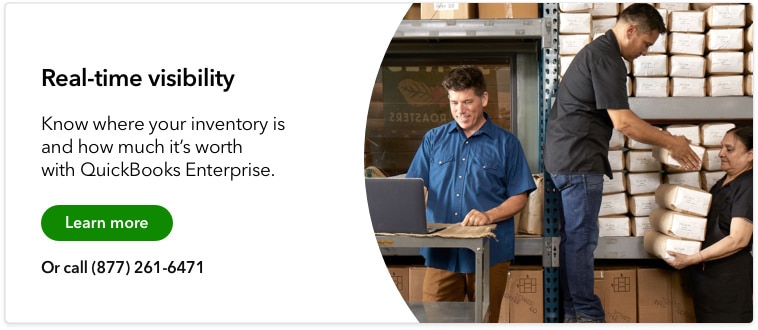Maintaining optimal inventory levels is a never-ending challenge for companies. Too little inventory can lead to stockouts and lost customers. On the other hand, too much inventory comes at a higher cost and the risk of remaining unsold.
This excess inventory, or overstock, sits in storage until it’s sold at a reduced price or eventually reaches obsolescence.
Overstocking is an issue that affects several departments, including purchasing, warehousing, and finance, and should be addressed as quickly as possible.
What is overstocking?
Overstocking is when companies purchase more inventory than they can sell within a reasonable period. The excess or surplus stock remains in the warehouse or store shelves, eating into resources and tying up cash flow.
Often, companies are forced to sell older products at a loss or consider them as dead stock, especially for perishable or seasonal goods.
What causes overstocking?
There are several reasons a company ends up with overstock, most of which are related to external factors or lack of oversight. Here are five causes of inventory overstock:
Fear of stockouts
The most common reason behind ordering too much inventory is to prevent stockouts or periods when a company is out of stock of a particular product.
Stockouts or understocking can negatively impact a company in the short- and long-term. Not only are there immediate lost sales conversions and revenue, but companies that are unable to restock quickly may also end up with lower satisfaction ratings and brand loyalty as customers start shopping at competitors.
Response to supply chain issues
Similar to their own stockouts, companies have also been dealing with shortages and issues in their own supply chains.
In the last few years, the COVID-19 pandemic, Suez Canal blockage, factory closures, and other economic events left many companies without inventory or any means to fulfill customer demand.
To protect against these supply chain disruptions, retailers increased inventory orders to keep their shelves stocked. This switch to a just-in-case inventory strategy has resulted in large quantities of surplus stock.
Inaccurate demand forecasting
Demand forecasting guides companies in how much inventory to purchase for upcoming seasons. Without accurate demand forecasting paired with prudent demand planning that draws from historical sales data, it’s nearly impossible to be prepared with the optimal inventory levels.
Of course, companies selling seasonal or trendy items have always been vulnerable to fluctuating customer orders. However, in recent years, almost all retailers have experienced the effects of economic and lifestyle changes on customer demand.
Improper inventory management
Inventory management is responsible for maintaining inventory levels that fulfill customer demand while decreasing overall costs. Not having a proper inventory management system to track critical information, such as inventory turnover and cost of goods sold (COGS), can leave a company without the visibility it needs to prevent overstocking.
Uninformed marketing strategy
Marketing campaigns are an effective way to generate sales, but only if research shows existing customer demand. No matter how engaging a company’s campaign or promotion may be, it doesn’t mean customers are willing to make a purchase. All inventory purchases and subsequent marketing strategies should first be founded on market demand and research.
What happens if you overstock inventory?
No matter the cause, holding onto unsold inventory creates unnecessary carrying costs and problems for retailers. The following are a few major consequences of carrying overstock inventory:
Increased overhead costs
The moment your company receives inventory, it begins incurring expenses. This includes warehousing and storage costs and any additional labor required to transport and manage overstock inventory. With warehouse storage space being one of the highest expenses on a company’s financial statement, even a short period of carrying overstock can add up.
Reduced cash flow
Money spent on inventory is only recouped by the sale of that same inventory. Overstock results in more working capital being tied up in inventory and unavailable for other investments, whether that means hiring more staff, exploring new locations, or replenishing other best-selling items.
Lost product revenue
For most retailers, inventory becomes significantly less valuable or obsolete in time. And the longer excess stock remains in the warehouse, the less revenue it can bring in. Eventually, companies will realize a loss in product revenue, selling the overstock at a discount, bundling it with other SKUs, or finding other ways to remove it from storage.
4 Tips for successfully avoiding overstocking
Thankfully, the likelihood of overstocking can be decreased with proper inventory management and data tracking. Here are four ways to ensure your business doesn’t end up with overstock:
Maintain updated sales forecasts
Sometimes, a company may not even know it’s ordering too much stock. Changes in demand are expected for specific items, like camping equipment or back-to-school supplies. However, recent years have also seen a massive shift in customer lifestyles and buying habits.
By keeping sales inventory forecasts regularly updated with fresh data, companies can adjust their orders to match market demand better.
Keep track of your inventory levels
A simple way to prevent overstock is by keeping track of inventory levels. You can make any necessary order adjustments by comparing your current stock against optimal inventory levels to avoid accumulating too many products.
Understanding the changes in stock levels throughout operations can help optimize reorder points, order quantities, and overall supply chain planning.
Conduct regular inventory audit
Retailers can go even further and perform a full inventory audit as a way to discover more overstocking solutions. In addition to inventory levels, audits check for record accuracy, inventory turnover, COGS, and other metrics that can be used to improve inventory management. Retailers that use QuickBooks Enterprise are able to monitor and audit inventory in real time without stopping operations.
Use software to connect all departments
To successfully avoid overstocking, companies need data across multiple departments, including purchasing, warehousing, marketing, and sales. Comprehensive inventory management software creates a single source of information that retailers can rely on to analyze real-time inventory levels, current market demand, and all the necessary information to guard against overstock.
How QuickBooks can optimize your inventory
A key part of avoiding overstock is to have access to the right data. QuickBooks Enterprise automates all the tracking needed by retailers to gain real-time visibility into critical inventory information.
Companies can see exactly how many products they have on hand, on sales order, and on reorder across every location. All expenses, from freight to warehouse labor, are also calculated to give a more accurate total for the cost of goods sold.
To maintain inventory optimization, QuickBooks automatically determines which products need to be restocked and can generate purchase orders from the dashboard in just one click.
Final thoughts
Overstock has recently become an issue for more retailers, given the unpredictable supply chains and wavering customer demand. While overstocking can be traced to several causes, the result is the same—a strain on company resources and the eventual loss in revenue.
To avoid overstock in your business, it’s essential to conduct regular demand forecasts and inventory audits. With QuickBooks Enterprise, this process can be made painless and further streamline your inventory management process.














